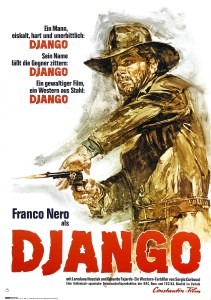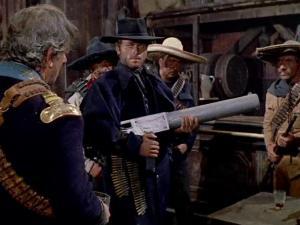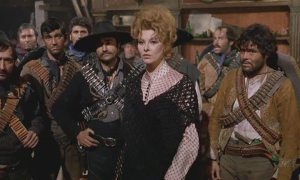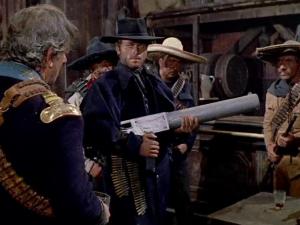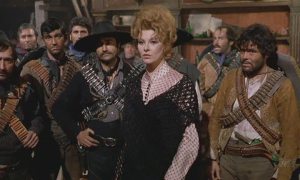Between this blog and my previous one, Professor Damian’s Public Domain Treasure Chest, I’ve been writing about movies for quite a while now. Because of that, there are a lot of posts that have simply gotten lost to the mists of time. So, I figured I’d use the idea of “Throwback Thursday” to spotlight some of those older posts, re-presenting them pretty much exactly as they first appeared except for updating links where necessary or possible, and doing just a bit of re-formatting to help them fit better into the style of this blog. Hope you enjoy these looks back.
Here’s another Throwback Thursday post from Progessor Damien which takes a look at what sometimes happens or at least used to happen) when foreign films are broght over to the US for popular consumption.
———————-
“Oh, no! They say say he’s got to go! Go, Go Gammera!”
 Yeah, it really doesn’t have the same panache as the Blue Oyster Cult original, does it, Kiddies? But that’s ok, because the giant monster in question today gets his own rock anthem right in the middle of his first movie. Even his giant lizard predecessor had to wait more than 20 years for that.
Yeah, it really doesn’t have the same panache as the Blue Oyster Cult original, does it, Kiddies? But that’s ok, because the giant monster in question today gets his own rock anthem right in the middle of his first movie. Even his giant lizard predecessor had to wait more than 20 years for that.
Daikaiju Eiga – that’s the Japanese term for the type of movie (giant monster) that we’re looking at today, and since that’s where the best ones come from, it seems only appropriate to give them their correct name. Of course, considering what we’ve done to the actual movies, simply ignoring the Japanese term would seem only a minor slight.
Toho films began the tradition, of course, with their 1954 release of the original Gojira, which came to America in the form of Godzilla. Unfortunately another trend was also begun once it reached our shores. Believing that American audiences wouldn’t want to watch a film either with subtitles or where there were very few American actors for them to relate to, the film was not only dubbed into English, but it was heavily re-edited, with scenes moved around, many of them pulled, and new scenes were added starring Raymond Burr. Unfortunately between bad translations and terrible editing, (and an attempt to both appease and appeal to American audiences) much of the original meaning and subtext of the film was lost. Still, it was a hit both there and here, and this treatment became the trend for all subsequent Japanese monster movies brought to America.
 As noted, Gojira (or Godzilla) first appeared in 1954. 11 years later, when the daikaiju eiga craze was really hitting its stride, Toho’s film studio rival, Daiei, decided to jump on the bandwagon and create their own giant critter. Now I’m not going to speculate on what the person who first proposed that they combat the big G. with a giant turtle was thinking, but fortunately they figured out some pretty neat ways to trick him out so that he could become a formidable foe for the forces that would soon be arrayed against him. First off, instead of “Atomic Breath”, they gave him fire breath. But this creature not only breathed fire, he could eat it. As a matter of fact, as the movie progresses, we find out that he is made of different stuff than those of us with lungs, and the big lug actually needs the flames as fuel to survive. More than that, though, Daiei also provided their Big G with a power that Godzilla would never get. When he pulled his head and legs into his shell, the giant turtle was able to shoot flames from his “port holes” and fly! Certainly helpful for an animal that otherwise has no way to get off his back, as the military soon finds out.
As noted, Gojira (or Godzilla) first appeared in 1954. 11 years later, when the daikaiju eiga craze was really hitting its stride, Toho’s film studio rival, Daiei, decided to jump on the bandwagon and create their own giant critter. Now I’m not going to speculate on what the person who first proposed that they combat the big G. with a giant turtle was thinking, but fortunately they figured out some pretty neat ways to trick him out so that he could become a formidable foe for the forces that would soon be arrayed against him. First off, instead of “Atomic Breath”, they gave him fire breath. But this creature not only breathed fire, he could eat it. As a matter of fact, as the movie progresses, we find out that he is made of different stuff than those of us with lungs, and the big lug actually needs the flames as fuel to survive. More than that, though, Daiei also provided their Big G with a power that Godzilla would never get. When he pulled his head and legs into his shell, the giant turtle was able to shoot flames from his “port holes” and fly! Certainly helpful for an animal that otherwise has no way to get off his back, as the military soon finds out.
 Of course, upon his arrival in the US, Gamera (the Japanese name) was given a pretty complete makeover. An extra “m” was, for some reason, added to his name. Another pretty atrocious dubbing job was done. And again, scenes were cut, recut, and added, so that the movie once again bore little resemblance to what it had once been. Nonetheless, the film proved successful in both its Japanese and American versions, and Daiei went on to bring him back in a film a year until 1971, when Daiei went into bankruptcy. (The first was actually the only one released to American theaters, the rest were packaged for Television by American International.) Since then, there have been a couple of attempts at revivals, though they have proved less successful.
Of course, upon his arrival in the US, Gamera (the Japanese name) was given a pretty complete makeover. An extra “m” was, for some reason, added to his name. Another pretty atrocious dubbing job was done. And again, scenes were cut, recut, and added, so that the movie once again bore little resemblance to what it had once been. Nonetheless, the film proved successful in both its Japanese and American versions, and Daiei went on to bring him back in a film a year until 1971, when Daiei went into bankruptcy. (The first was actually the only one released to American theaters, the rest were packaged for Television by American International.) Since then, there have been a couple of attempts at revivals, though they have proved less successful.
Here’s a short clip showing the monster’s initial emergence from his icy tomb and a bit of the American footage that was inserted.:
(Just a note: it is only the American version which was never properly copyrighted and is now in the Public Domain. The original Japanese version is still under copyright, and Shout factory has announced that they have licensed it and will be giving the film its first American DVD release on May 18th.)
Now for the Skinny:
Title: Gammera the Invincible
Release Date: 1965
Running Time: 86min
Black and White
Starring: Gamera, Brian Donlevy, Eiji Funakoshi
Directed by: Noriaki Yuasa
Produced by: Hidemasa Nagata, Yonejiro Saito, Masaichi Nagata
Distributed by: Daiei
And as always, until next time, happy viewing!
—————————–
Hope you enjoyed this blast from the past.

